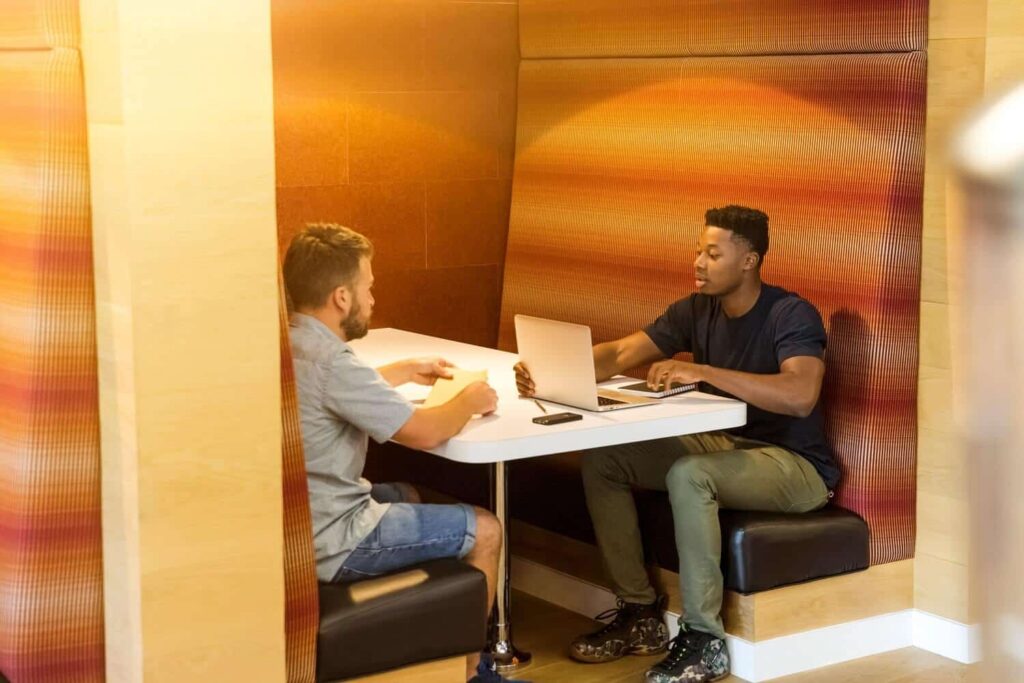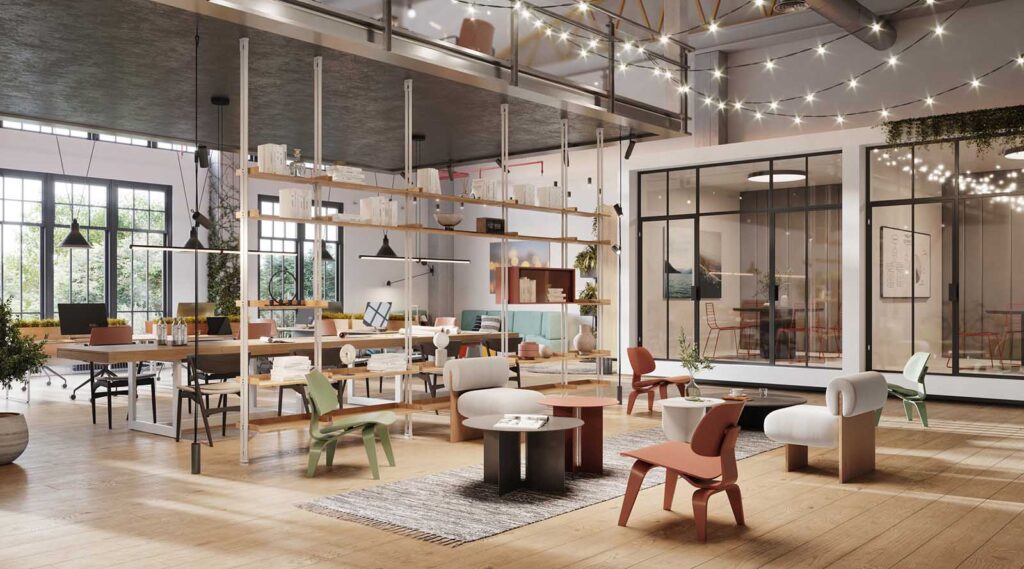An Ambivert Office Design
Different Spaces for Different Purposes
To avoid a design that’s geared only toward introverts or only toward extroverts, your office should include a mix of different spaces. For extroverts, a common area with lounge furniture arranged in a circular pattern can be a great place to work and interact. For introverts, private areas can be a safe haven where they can hole up and work quietly for an hour or so.
Of course, both of these space types can be used for collaborative work, too. Common areas can be used for larger brainstorming sessions, while conference rooms or private areas can be used for work in small groups.
Think About Acoustics
Work tendencies aside, nobody likes having to deal with too much noise. Hatch, an interior design company, advises using elements like “acoustic panels, carpet or cork flooring, and textile covered partitions” to reduce noise levels in open-office environments. The same applies to private offices, which should also be outfitted with insulated “walls, ceilings and mechanical ducts.” With these elements in place, workers are less likely to be distracted by echoes, or the sound of a coworker’s chit-chat across the room.
…and Other Sound-blockers
What about introverts who work in cubicles? How can they get the quiet they need? One option is white noise machines, which can mask auditory disturbances ; Psychology Today says that elements like panels, curtains or shelving can also make cubicles more sound-proof. Cubicles.com suggests plants as another means for absorbing sound. Finally, there’s the tried-and-true option of using earbuds or headphones when concentration is a must.
Make Your Office Greener
The Hatch blog also makes a great point that others who have written on this topic seem to neglect: Natural elements are good for any person, regardless of whether they’re introverted or extroverted. Tall windows, office plants and desk arrangements that expose workers to natural light are all ways to bring the outdoors in. Providing a place where workers can take outdoor breaks, like an outdoor common area with patio furniture, can also give them an alternative place to work, eat and relax.
Some have embraced the open office as the best way to work, while others faithfully defend the merits of the traditional cubicle. But when you take the needs of both introverts and extroverts into account, including elements of both is your best bet.
To sum up, an office that’s designed for introverts and extroverts will do four things:
When an office is designed to suit these different personality types, not only will workplace happiness rise, productivity will increase, and visitors and workers alike can experience a dynamic, interesting workplace.
photo credit: K2 Space via photopin cc




